Investment advisors come in all shapes and forms, just like the clients who need their services. Over the years Mottet Wealth’s purpose-driven approach to investment management has attracted a number of high-level executives, but also business owners – both large and small.
Each individual who knocks on our door has unique needs, but self-employed individuals and business owners have some very specific requirements when it comes to retirement saving and how they balance income and tax responsibilities.
For small business owners, the self-employed and sole proprietors, a common question is: Which is better, a Solo (self-employed) 401k or a SEP (self-employed retirement plan) IRA?
Which is Better, a Solo 401k or SEP IRA?
There is no right or wrong answer to this question, but considering the pros and cons outlined in this blog might help you make a better decision.
My suggestion, once you’ve gone through the information on both the Solo 401k and the SEP IRA is to speak to a professional who can consider all the ramifications based on your situation and then help you arrive at an informed choice.
Solo 401k: The Advantages and Disadvantages
If you and your investment advisor project that you will be in a lower tax bracket when you retire, then it might be worth leaning towards a Solo 401k. Since all money invested in a Solo 401k is pre-tax, this reduces your taxable income dollar for dollar – giving you an instant return on investment and giving you the option to find an investment home for those tax savings.
In most cases, our clients choose to invest more money in the Solo 401k to create a larger tax deduction. In 2022 the contribution limit is $20,500 for the employee but, because a Solo 401k enables a self-employed individual to make contributions both as employee and employer, the employer can add 25% of their adjusted income (20% in the case of a sole proprietorship or single member LLC) up to a total of $61,000.
For self-employed plan holders over the age of 50, it is possible to add an additional ‘catch-up contribution’ of $6,500, raising the grand total to $67,500 for 2022. If your spouse is employed, then the same arrangement could work for them as well – but do note that non-spouses do not qualify.
One of the nice perks of investing in a Solo 401k is that the holder can also take a loan from the plan, as long as it is equal to the lesser of either $50,000 or 50% of the account balance.
There is, however, a downside for self-employed folks who enjoy higher salaries in that they will in turn pay more in Federal Insurance Contributions Act and Medicare contributions. It is advisable to consult with a Certified Public Accountant to figure out the best balance. Also, bear in mind that if the balance in the plan reaches $250,000 it is also necessary to fill out an IRS form – 5500-EZ.
SEP IRA: The Pros and Cons
The tax advantages you receive from using a SEP IRA are one of the biggest pluses of using this vehicle, rather than opting for a traditional IRA.
For 2022, the maximum contribution you can make into a SEP IRA is 25% of the adjusted net earnings – 20% in the case of sole proprietorship or single member LLC – or $61,000. The money invested in a SEP IRA also reduces your income dollar for dollar.
The core advantages of using a SEP IRA include:
- It is simple to set up and administer.
- You don’t have to contribute into a SEP IRA each year in order to keep it.
- You can combine having a SEP IRA with a traditional or Roth IRA.
Another pro is the high annual contribution limit, with all contributions being tax deductible – including those made by the employer. For 2022, the IRA limits are $6,000 unless you are over 50 when it jumps to $7,000.
But bear in mind there are income limits with Roth IRAs. For 2022, if you make over $204,000 in modified adjusted gross income (MAGI) and file married or jointly then your ability to contribute starts phasing out.
Once your income reaches $214,000 you can no longer invest in a Roth IRA. If you file as single or head of household, you can contribute the full amount up until you make $129,000 of modified adjusted gross income (MAGI). After that – your amount is reduced until you hit $144,000 at which point you are unable to contribute.
There are some downsides to the SEP IRA route:
- In order to qualify for a SEP IRA you must have earned income.
- SEP IRA contributions can only be made in pre-tax format and you can’t contribute more than you earn.
- The employer is the only one that can make contributions. But you can invest if you are the employer and the employee.
- Catch-up payments for people 50 and older are not allowed.
- Employers must match contributions to the same percentage as employees.
- Minimum distributions apply when you turn 72.
- Since there is no Roth IRA version of the SEP IRA, it is not possible to plan for a tax-free retirement.
- Penalties generally apply if you make early withdrawals.
Not the Only Horse in the Race
If you’ve read through this information and you still aren’t convinced that either a Solo 401k or a SEP IRA are for you, then another option to explore is a Keogh plan. A Keogh plan – which is often known as an HR(10) plan – is a tax-deferred retirement option designed specifically for self-employed people and unincorporated businesses. They are not available to independent contractors.
Over the years, Keogh plans have become a less popular option than the Solo 401k or the SEP IRA, in part because they cost more to administrate. However, they do enable high-earning business owners to make bigger contributions and invest pre-tax cash. So, despite the complexity of this pension vehicle, it still has a part to play in some retirement discussions for those big earning self-employed.
To discuss whether your retirement planning would benefit from a Solo 401k or SEP IRA approach, or even from an old-style Keogh plan, give me a call and let’s talk.








